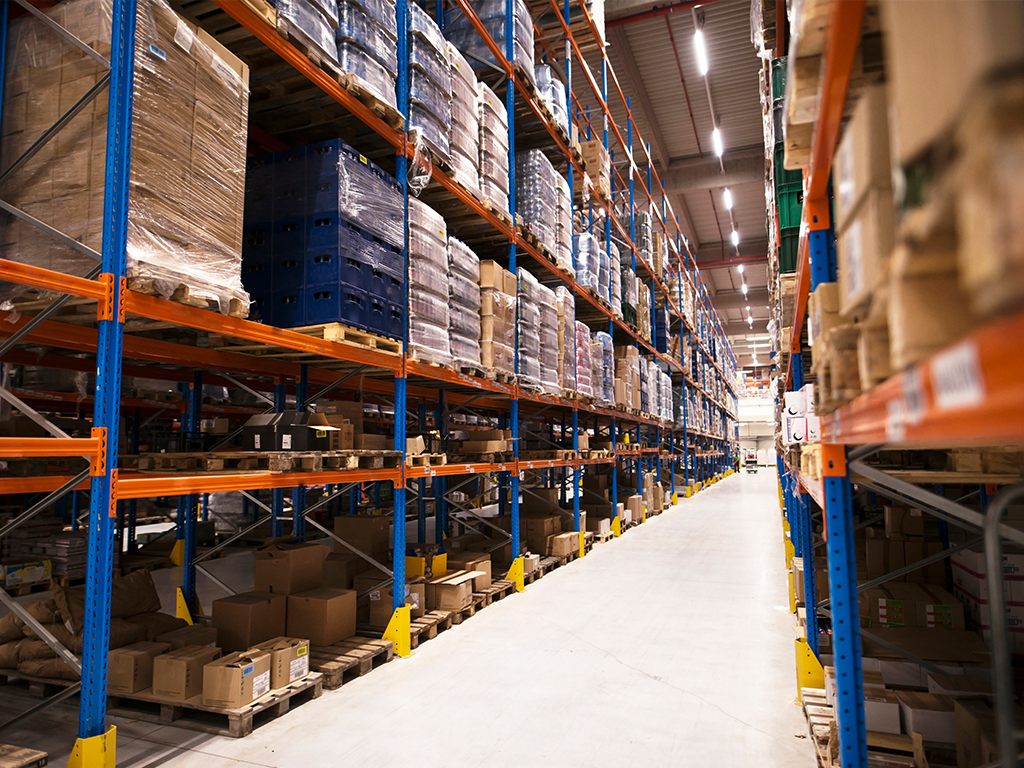The role of the supply chain in achieving the competitiveness of organizations.
In the contemporary business world, Supply Chain Management (SCM) is considered one of the most crucial elements for the success and sustainability of companies across various industries. Supply chain represents the comprehensive system that encompasses all the steps involved in transforming raw materials into finished products and delivering them to end customers. It includes several aspects such as procurement, manufacturing, distribution, inventory management, transportation, marketing, and more, making it a complex and integrated process.

In the contemporary business world, Supply Chain Management (SCM) is considered one of the most crucial elements for the success and sustainability of companies across various industries. Supply chain represents the comprehensive system that encompasses all the steps involved in transforming raw materials into finished products and delivering them to end customers. It includes several aspects such as procurement, manufacturing, distribution, inventory management, transportation, marketing, and more, making it a complex and integrated process.
Achieving competitiveness in the current business environment is vital for the continuity and sustainable success of companies. The global market is witnessing rapid developments, continuous transformations, and intense competition among companies both locally and globally. Therefore, achieving effective competitiveness becomes an urgent necessity for companies to survive and achieve sustainable success.
Competitiveness is not merely a goal for companies but rather a vital requirement in a changing business environment. In this context, supply chain emerges as a crucial strategic tool that contributes to enhancing the competitiveness of companies and achieving their outstanding performance in the market.

Fundamentals of Supply Chain:
Supply chain is a comprehensive concept that refers to the series of operations involved in transforming natural resources and raw materials into finished products ready for marketing and distribution to end customers. The supply chain consists of a set of elements and interactions focused on achieving specific goals to effectively meet customer needs in a timely manner.
One of the key aspects to understanding the supply chain is understanding its core components. These components include various essential elements such as sourcing and procurement, inventory management, manufacturing, transportation and distribution, and supplier and customer relationship management. Each part of these components significantly contributes to achieving the ultimate goals of the supply chain.
Furthermore, understanding the workflow within the supply chain and the interaction of different components is of utmost importance. Coordination and interaction among various elements within the supply chain contribute to achieving higher efficiency, reducing costs, and improving product quality and customer service. Therefore, understanding the workflow and interaction of key components is essential to ensuring the efficient and successful achievement of the supply chain goals.
The Role of Supply Chain in Achieving Competitiveness:
Supply chain plays a crucial role in achieving competitiveness for companies in the contemporary business environment. It represents a primary source for gaining competitive advantages that help companies excel and remain in the market. The role of the supply chain in achieving competitiveness encompasses several important aspects:
Firstly, supply chain can help improve operational efficiency and reduce costs. By enhancing workflow, reducing overhead costs, and increasing productivity, companies can improve profit margins and thus enhance their competitiveness.
Secondly, supply chain contributes to improving product quality and customer service. By providing high-quality materials and components in a timely manner, companies can enhance the quality of their products and increase customer satisfaction, leading to enhanced competitiveness.
Lastly, supply chain contributes to improving market responsiveness and adaptation to changes. By enhancing companies' ability to quickly respond to changes in market demand and economic conditions, the supply chain can make companies more flexible and adaptable, thus enhancing their competitiveness.
These concepts can be illustrated through practical examples of companies that have succeeded in improving their competitiveness through supply chain enhancement, such as Apple, Toyota, and Walmart, which have been able to achieve sustainable competitive advantages in their respective markets through their supply chain management strategies.

Supply Chain in Enterprise Resource Planning (ERP) Systems:
Supply chain in Enterprise Resource Planning (ERP) systems represents a vital element in achieving high efficiency and sustainable competitiveness for companies. I-Zone system, ERP system provided by CodeZone, offers a range of tools and features aimed at improving the supply chain and enhancing the company's performance in this aspect.
Firstly, I-Zone system provides a variety of methods and procedures to help improve the supply chain. These methods may include enhancing communication and coordination between different departments within the company and with its partners in the chain, improving inventory management, optimizing logistics and transportation processes, as well as enhancing storage operations and order management.
Secondly, I-Zone system enables the use of advanced ERP technologies to enhance the performance of the supply chain. Companies can utilize accurate data and intelligent analytics provided by the system to improve resource planning, guide marketing and distribution strategies, enhance product quality, and increase customer satisfaction.
By using the ERP system through I-Zone system provided by CodeZone, companies can achieve comprehensive integration of their operations and significantly improve the performance of the supply chain. The system provides opportunities to increase efficiency, reduce costs, and enhance product quality, thereby contributing to strengthening the company's competitiveness and achieving sustainable growth in both local and global markets.

Challenges Facing Supply Chain Improvement and How to Overcome Them:
Improving the supply chain faces numerous challenges that must be overcome to ensure the company's goals are met and its competitiveness is increased. Among these challenges:
Technology complexities: Applying technology in the supply chain can face challenges such as updating old systems or the costs of transitioning to new technologies.
Disruptions in the supply chain: Natural events and geopolitical disruptions can negatively impact the flow of materials and resources in the supply chain.
Demand fluctuations: Fluctuations in product demand may cause difficulties in production planning and inventory management.
To overcome these challenges, companies must invest in appropriate technology, develop strategies to deal with disruptions in the supply chain, and enhance their ability to adapt to changes in demand.
Exploring Future Opportunities for Developing and Improving the Supply Chain to Increase Competitiveness:
Despite the challenges, there are many future opportunities to develop and improve the supply chain to increase competitiveness. Among these opportunities:
Artificial intelligence and big data analytics: Using advanced technologies such as artificial intelligence and big data analytics can help improve demand forecasting and enhance storage and distribution operations.
Continuous improvement and total quality management: Investing in continuous improvement of supply chain operations and continuously monitoring quality can contribute to increased efficiency and improved customer satisfaction.
Sustainability focus: Transitioning to a sustainable supply chain can create opportunities to expand into new markets and meet increasing customer demands for environmentally friendly products.
By harnessing these opportunities and making strategic investments, companies can achieve continuous improvements in the supply chain and increase their competitiveness in the market.

Conclusion:
In conclusion, it can be said that the supply chain represents a backbone for any company seeking competitiveness and success in the competitive business market. Achieving competitiveness requires a deep understanding of the challenges facing the supply chain and the ability to adapt to them, in addition to exploring future opportunities and having a strategic vision for improving and developing operations.
By investing efforts in improving the supply chain and effectively utilizing technology, companies can enhance their efficiency, reduce costs, and increase product quality and customer service. With the evolution of markets, changes in demand, and technology advancements, companies must always be vigilant and innovate and adapt to achieve excellence and sustainability.
Ultimately, improving the supply chain is not just a technical task but a fundamental strategy to ensure the survival and success of companies in the dynamic and competitive business world.


